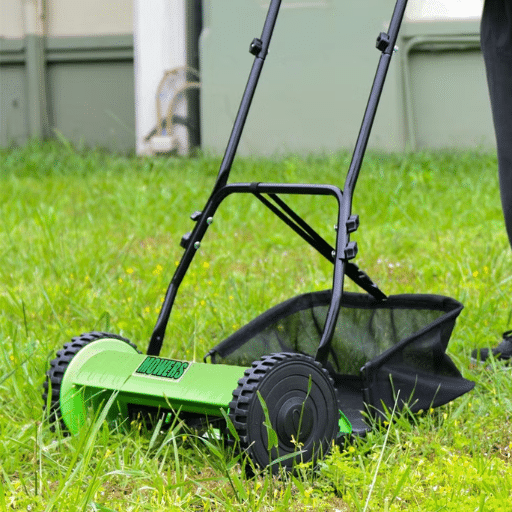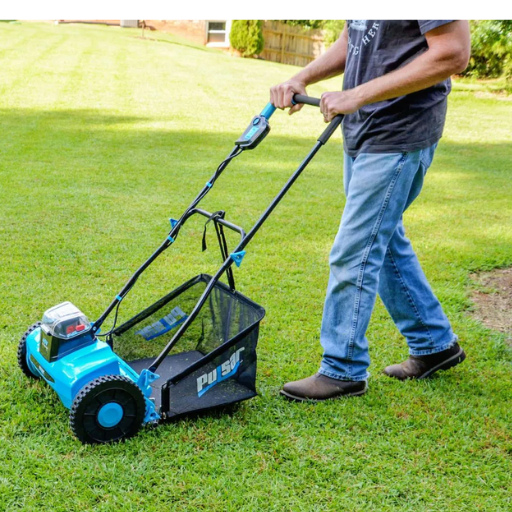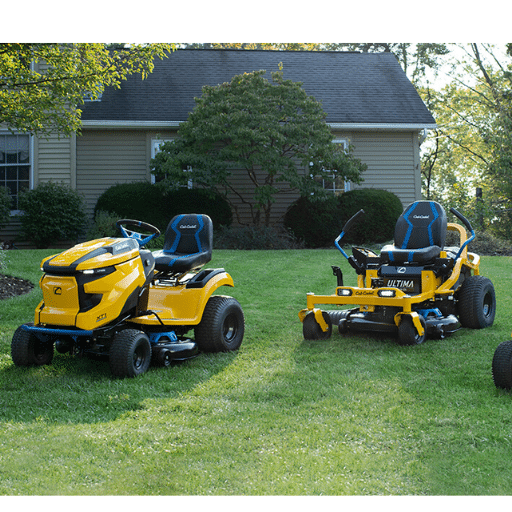Several essential aspects should be considered when working with sewing and embroidery combo machines so that the quality of the machine and satisfaction with costs are maximized. Let’s discuss the most prominent one: the embroidery area, which is perhaps the most important of all the features since it dictates the size at which one can work with the designs; more area creates more possibilities and space for the designs. The third aspect to consider is the machine’s number of built-in designs and the software compatibility to upload a wider variety of designs. Furthermore, the properties of embroidery machines should include sewing speed and a few automatic features – needle inserting and thread cutting – which are valuable features that increase standard efficiency levels and the overall usability of the machine. Most importantly, adequate warranty and support arrangements are also necessary to guarantee that users are comfortable with the machine in the long run, and assurance is critical for beginners or those doing advanced work.
What is a Sewing and Embroidery Combo Machine?
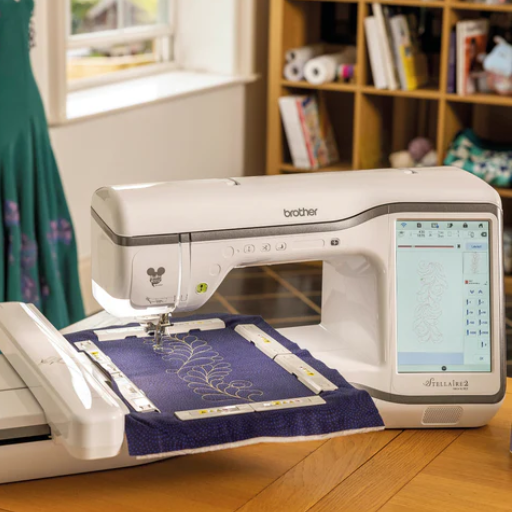
A sewing and embroidery combo machine is an advanced machine that allows users to sew and embroider efficiently. These machines require little effort, as users can easily transition between sewing modes and embroidery. The combination machines are built to withstand several fabric types or complexities in designs, have multiple stitches and embroidery design units, and some even incorporate touch features for accuracy. They have various functionalities so the user can complete numerous projects, from simple sewing to complex embroidery, making them ideal for hobbyists, severe seamstresses, and designers alike.
Understanding Embroidery and Sewing Functions
The use of embroidery functions in a combo machine is more than a mere decorative stitch. Such functions make designing elaborate patterns and images easy through a digital connection that imports and supports various file types like .pes and .dst. Accordingly, designs may also be developed internally and modified to enhance accuracy and consistency using imported ones. Some additional tools included in the embroidery motion are hoops of different sizes, self-adjustable tension, and many more thread colors that let the users imagine more of other materials.
Combo machines have advanced sewing capabilities that offer a variety of stitches, including straight, zigzag, and decorative stitches. Such machines have adjustable stitch length and width to enable the user to meet the specifications required for a project. The presence of self-threading, self-tensioning, and adjustable speed machines further enhances the experience and ease of sewing, whether for delicate embellishments or heavy stitching. Thus, such technical features help with everything from silk embroidery to sewing denim for all kinds of sewing and embroidery works.
Benefits of Using a Combination Machine
Based on what I have encountered, sewing and embroidery crafts machines have several advantages and make creative work more accessible. First, dual tasking eliminates wastage of space and resources since I will only need one machine to perform both functions. Such integration means that I can go from stitching the central part of the garment to applying the embroidery without any further devices. Second, the advancements that come with these machines, such as automatic threading and a built-in design library, make even the most complex projects much less time-consuming and tedious. As I can input or download new designs, I am introduced to a broad scope of creativity, whereby I can modify things quickly. Also, the systems are easy to use because of the intuitive interface and numerous tutorial videos, making it easy for my students to operate these machines. To summarize, a combination machine’s efficiency, portability, and time-saving features make this device a must-have in my sewing tool.
How a Combo Machine Differs from a Traditional Sewing Machine
Each integrated machine has distinct attributes that stand out compared to a primary sewing machine. In my recollection, a regular sewing machine is more oriented towards the basics of fabric sewing and sewing with simple stitches. In contrast, a combo machine includes the broad capabilities of both the needlework and the embroidery machine. This incorporates such built-in components as embroidery and the ability to load various intricate designs, which are features missing from the average machine. Moreover, the combo machine eliminates much of the struggle by utilizing touchscreens and design libraries. These machines allow me to flat-stitch and heavily embroider garments, changing how you order the projects. The synergy? It not only provides more functionality but also makes the overall work simpler. Which, most times, a standard sewing machine can’t offer.
How to Choose the Best Sewing and Embroidery Machine?

Several aspects must be considered when choosing the best sewing and embroidery machine because this will guarantee excellent performance and value to the users. Embroidery, as a larger area, requires more space surrounding the design, allowing room for the expansion of designs, and thus should be the first area to be looked at. Check the internal design of the machine and its related software since these are critical elements in accessing a diverse range of designs applicable to the machine and also assist in adding designs. Examine things such as the speed at which the stitches are applied and other semi-automatic activities such as replacing threads and cutting the same, looking to enhance the effectiveness and comfort of use. Providing adequate backup support and warranty cover to assure consumers of the machine’s reliability is another critical factor to look into, especially for those new to the work or intending to handle complex work. With these elements in mind, one can obtain a machine that meets their design and functional requirements, improving sewing and embroidery.
Key Features to Look for in a Sewing and Embroidery Machine
The task of sewing and embroidery is delicate and requires skill and the right machinery to achieve the desired results. One of the most critical factors a user must be aware of while using the machine is the embroidery field size. Specific models like the Brother SE1900 and Janome Memory Craft have considerable stitching areas. These provide more opportunities in terms of design and unleash the full potential of the machine. Another factor to be considered is software compatibility, as well as built-in libraries that allow access to different patterns and the features of design import. As of now, such contemporary models can be found that can seamlessly work with .pes, as well as .dst files.
Furthermore, automatic threading and thread cutting should be considered, as these features save much time during the sewing process. The ability to adjust the sewing speed in leading models allows for more variety in skill levels and complexity of the projects being undertaken. A durable machine with aggressive customer support is also essential, especially for first-time users. If these features are considered, versatile crafters will purposefully expand their designing capabilities and be able to use the machine to its full potential.
Top Brands: Bernina, Brother, and Janome
While researching the best-rated brands of sewing and embroidery machines today, it became clear to me that Bernina, Brother, and Janome remain the leaders in the sector. It is said that Bernina stands out for quality products because of its precise engineering, Swiss making, and creativity embodied in the machines, which are easy to use and durable. Their devices are favored by those willing to understand exploring complex features combined with a sophisticated build. Brother’s models are user-friendly and cheap, and they come with several valuable and easy-to-use functions that range from built-in designs to easy touch controls. For them, beginners, as well as experienced users, can take advantage of the all-encompassing features and the strategic brilliance of creativity embedded in cutting-edge technology. Janome offers a new perspective on modern hr technologies in the seizure, integration of innovations, and manufacture of simple machines working efficiently with the sewing and the second most embroidered machines for creativity. Most of their models incorporate some user-friendly interface that software easily accommodates, making them popular among people who want a streamlined experience manufacturing their designs. Every company’s offering has definite advantages that enable customers to pursue individual preferences and creative aims. Thus, all these companies are strong competitors in the market.
Considerations for Beginners and Experienced Users
As a practitioner who advocates for both newbies and seasoned practitioners in machine embroidery and sewing model selection, I comprehend the need to define the sewing machine model based on the selected level of experience and the projects one is targeting. New users, for instance, would do well to look for particular aspects such as an interface that is easy to understand and built-in educational programs that are common with Brother sewing machines. These features make the challenging stages easier and build confidence at the initial stage. On the other hand, more advanced practitioners could look for one of their more advanced embroidery machines from companies such as Bernina or Janome, which encourages complex control and more diverse designs that can accommodate complex works and enhance creativity. Further, there is an additional focus on service support, in which case the cover is perfect, and one should expect to have support to resolve most technical issues as they develop. This dual strategy will also make the situation easy for the competition and her future veterans, opening avenues toward performance and skills refinement needed for various forms of creativity.
Exploring Popular Models like Brother SE1900 and SE600

While reviewing high-end sewing and embroidery machines like SE1900 and SE600, addressing the features that tend to be the most pressing to the buyers is essential. Representative consumer characteristics such as a sizeable 5×7 embroidery area featured on the Brother SE1900 provide an opportunity for larger, more ambitious design projects, providing the user with plenty of room for creativity. To address concerns about the variety of designs, the presence of a rich design base and a USB port for connection to various design files and their importation stand. Automatic needle threading and adjustable sewing speeds bring more attention to the convenience of use and efficiency of the machine, which is often expected by potential customers primarily looking for usability and productivity.
While its embroidery field may be small, with a dimension of 4 inches by 4 inches, the Brother SE600 is suitable for beginners because of its practical semi-automatic design. The available color touchscreen interface and the color design also simplify the crafting and editing processes, which should address the concerns of potential users. Regardless, both models are meant to address real-world needs and innovation, giving different degrees of assistance depending on the user’s knowledge and the extent of the task. Gaining such knowledge will enable you to see these machines as solutions to deep-rooted performance issues, customizability, and user-friendliness, assisting you in reaching an appropriate decision that meets your expectations.
Features of the Brother SE1900
The Brother SE1900 model features a massive embroidery area of 5×7 inches, which is large enough for any intricate or grand design work. The model has many options, including 138 embroidery designs and 240 sewing stitches. For suitable RCT intervention, the design is made with a tessellation appearing as a semiconductor mesh, utilizing a color LCD interface that is easy to operate. Additionally, different file formats of images can be used, thanks to the built-in USB interface. For proficiency purposes, this sewing machine includes an automatic needle threading system and a thread cutter, which helps avoid wasting a lot of time. This means that the sewing will start with a default speed for complex projects, enabling the user to maintain control depending on how simple or complicated the project is. With such diverse features, this model has combined practicality and flexibility for all users, making it appeal to a wide range of embroidery and sewing patterns.
Comparing Brother SE1900 and SE600
The most exclusive feature of Brother SE19000 is its ample 5×7 inch embroidery space that increases opportunities for creativity in completing more extensive projects. This model has a more significant number of built-in patterns and stitching modes, which is likely to appeal to a user willing to construct many different designs. This person can love the vital USB port and increased design editing options.
On the other hand, the Brother SE600 cuts across a wide swath of beginner users, especially with its limited 4×4 inch embroidery field, which makes this machine a more manageable proposition for beginners. Novices learning to sew and embroider will find this touch screen, editing, and user-friendly expectations to make the entire process much more intuitive. It can be concluded that the appropriate choice depends only on the scale of the work being done and the skill of the person working on it, with the latter being a better fit for intermediate work. At the same time, the former is more suitable for simple and organic practices.
Why Choose Brother for Embroidery?
I’m ready to say that if you choose Brother for your embroidery needs, you’ll receive a combination of top-notch technology, durability, and versatility. Brother machines are often praised for their simplicity and support resources; hence, starting and advanced crafters will not struggle to use these products. Models such as the SE1900 or SE600 rank high in their design libraries and possess user-friendly touchscreens, which make the creative process seamless and efficient. On top of that, Brother is very supportive, and resources are given to ensure efficient completion of tasks regardless of the level of expertise. These factors are consistent with what I look for in an embroidery machine – simplicity, design variety, and good technical backup – which, in general. Therefore, any aspiring embroiderer should consider the Brother brand.
How to Master Embroidery Designs with Your Combo Machine?
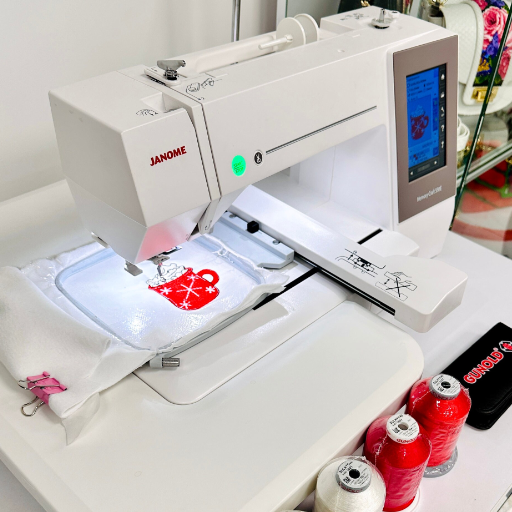
When learning how to use a combo machine, like the Brother SE1900 and SE600, there are essential aspects of both its operation and the design capabilities that need to be appreciated and understood. For starters, get used to the machine’s built-in designs along with the USB for those designs relevant to the scope of your imagination. Get some practice with the colored LCD touch screen of the module to select, change, and customize designs vigorously while becoming familiar with the available editing tools. Other essential details include the machine’s threading systems along with the adjustable sewing speed, which, if used correctly, increases throughput and makes complicated tasks a lot easier. These activities ought to be complemented by continuous practice and experimentation with different stitches and settings. As you continue to exploit all these capabilities and remain focused on practice, you shall keep mastering the various lining capabilities and other creative aspects of embroidery design.
Getting Started with Built-in Embroidery Designs
As one of the first steps in working with the built-in embroidery designs on your Brother SE1900 or SE600, look through the machine’s memory for already-designed templates the manufacturer offers. These designs provide a good starting point, especially for first-timers, as they are versatile enough for almost any project. The design menu can easily be accessed and altered so that the most preferred design is selected simply using the touchscreen interface. Make sure to familiarize yourself with the necessary tools, like the USB port, to understand how to upload extra designs that you feel will better complement your work. As the top sources, Sewing Machines Plus, Craftsy, and Brother himself, confirm, some critical functions should be mastered to exploit your machine fully. These sites stress the need for additional exercises and design work in order to be able to use built-in designs to their advanced level. Learning these techniques will help you prepare your ideas quicker while enhancing them throughout stitching them out.
Tips for Maximizing the Embroidery Area
Appropriate planning and execution strategies will guarantee the most efficient use of the embroidery area of your Brother machine. First, people should ensure that their design size is appropriate for a five by seven inches or four by four inches circle by using available inbuilt features or appropriately designed soft wares. I always confirm the placement with the machine’s preview screen to avoid mistakes. It is essential to stabilize your fabric well; I sometimes choose the appropriate stabilizer for puckering and non-uniform stitching. Also, an optimal design layout that maximizes the available area is critical. This is done by placing many designs on the hoop area across the center. With enough practice and minute correction, one can utilize your machine’s embroidery ability to the greatest extent possible every time.
Using the Hoop Effectively
To use the embroidery hoop on your Brother embroidery machine effectively, start by determining the most appropriate size of the hoop for your work. This can either be the 5×7 inch hoop for your SE1900 or the 4×4 inch for your SE600. It is imperative to maintain the design fitting the selected hoop; this can also be ensured by adjusting the design using the machine’s built-in resizing capabilities or through compatible software. Design placement is efficient thanks to the preview feature, which helps eliminate mistakes from stitching activities. It is also important to note the technical factors, such as the fabric of the design, which should be secured within the hoop using an appropriate stabilizer, cut-away medium-weight stabilizers. They emulate various textures and can be applied for most uses.
The tension adjustments must also be correctly set to avoid thread breakage or looping. Most fabrics should use a standard tension between 3 and 5. Repetition of these techniques and adjustments will allow for the effective use of the embroidery hoop and the stability of the designs.
Is a Computerized Sewing and Embroidery Machine Right for You?
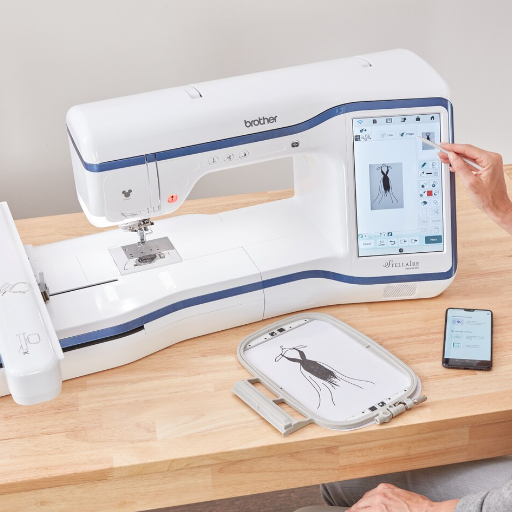
When deciding whether a computerized sewing and embroidery machine would fit one’s needs, specific considerations come to the fore. First, gauge the level of impressiveness and the range of techniques necessary for your sewing projects. Models such as Brother SE1900 or SE600 would afford the user reliable features such as internal libraries with designs, USB ports, and user interfaces that incorporate touch screens, which help maintain the accuracy of the control. These machines are handy for people who plan to do elaborate or diverse embroidery work because they have many designs and customization options due to the embedded designs and software integration. Besides, evaluate your skill and experience with computer use since computerized machines are not easy to operate without knowing how to use their different functions effectively. Last, consider the type of support and help available since companies like Brother provide excellent support, which is crucial to beginners or even some advanced users. If your hobbies and interests involve crafting with many patterns, ease of use, and outstanding customer service, you can purchase a computerized sewing and embroidery machine.
Advantages of Computerized Sewing
Both beginning and experienced sewers can benefit from computerized sewing machines such as the Brother SE1900 and SE600, which have many features that cater to different skill levels. Expert sources like Sewing Machines Plus, Sewing Insight, and Best Buy say these sewing machines are undoubtedly accurate and easy to work with. Positive features include many pre-set stitches and machine embroidery patterns, which provide greater design possibilities and allow functioning in various tasks without wasting much time on the set. The sewing operation is also quickened and made more accurate due to the automated cutting of threads, threading of needles, and adjustment of the tension. Additionally, the availability of touch screens and the possibility to connect to USB ports enhance the machine’s capabilities concerning uploading new designs and compatibility with other modern design programs. Such technological advancements make sewing or crafting more efficient and intricate designs possible and enhance the crafting experience. Therefore, combining the best features of both technology and traditional sewing in computerized machines makes sewing very fast, easy, and a delightful experience.
Exploring the Features of the Bernette Model
Concluding the assessment of the Bernette Model, I was able to appreciate the various factors that make this model a worthy competitor in the field of sewing and embroidery machines. It becomes pretty evident how the Bernette Model has won the hearts of so many sewn machine users from the experience of various top sources, including Sewing Insight, Best Sewing Machines, and Bernina’s official website; it is pretty simplified and robust. It comes equipped with a comprehensive range of measurements and built-in stitches and guidelines, making the device suitable for amateurs and professionals. The model’s functionalities are improved by including automatic thread cutting, an adjustable stitch length and width, and a needle threader, which all help simplify the sewing process and reduce the need for manual effort. In addition, the model is also suitable for a wide range of fabrics and types of projects and is, therefore, quite suited for varied sewing applications. For these reasons, the Bernette Model seeks to be a reliable sewing tool for those who do not need to be overwhelmed with many features but are looking for a good combination of simple tools and advanced technology.
Understanding the Role of Technology in Quilting and Embroidery
Quilting and embroidery would be dull without technology, as it dramatically improves the efficiency and creativity of the craft. As I view leading resources, such as Sewing Insight, Brother, and Quilting Daily, it becomes clear that the progress of technologies has revolutionized such activities. Modern computerized sewing machines offer the possibility of automatic precision stitching through tension control, automatic selection of patterns, and preview capabilities. These machines reduce configuration time and make it possible to create complex configurations that were previously difficult to develop or implement. In addition, software integration technology supports the easy creation of configurations by eliminating the need to load and edit them. This development reduces the time involved in quilting and embroidery and increases the creativity and enjoyment of the art form regardless of skill.
References
Frequently Asked Questions (FAQ)
Q: What are the benefits of using a sewing and embroidery machine combo?
A: Sewing and embroidery machine combos offer versatility, allowing you to switch between sewing and embroidery tasks seamlessly. By combining two machines into one, they save space and money, making them ideal for both beginners and experts looking to enhance their creative projects.
Q: Is the Brother Innov-is a good machine for beginners?
A: Yes, the Brother Innov-is is an excellent machine for beginners. It features user-friendly controls and a variety of built-in sewing stitches, making it easy to learn and use while offering advanced options for more experienced users.
Q: How does the Brother SE2000 differ from the Brother SE700?
A: The Brother SE2000 offers more advanced features than the SE700, including a larger embroidery field and faster stitches per minute. Both are excellent embroidery and sewing machine options, but the SE2000 is better suited for complex embroidery projects.
Q: What makes the Brother SE600 popular among Brother sewing and embroidery machines?
A: The Brother SE600 is popular due to its affordability, ease of use, and versatile features. It includes a range of built-in sewing stitches and an intuitive touchscreen, making it ideal for home sewing enthusiasts exploring sewing and embroidery.
Q: Can quilting be done on combination sewing and embroidery machines?
A: Yes, many combination sewing and embroidery machines, including the Brother Innov-is and Janome Horizon Memory Craft 14000, come with quilting capabilities. They also offer various quilting stitches and features that make them suitable for quilting projects.
Q: What should I look for in a budget machine for beginners?
A: When looking for a budget machine for beginners, consider factors like ease of use, number of built-in sewing stitches, embroidery features, and maximum sewing speed. Machines like the Brother SE700 provide an affordable entry into sewing and embroidery without compromising on essential features.
Q: How important is the embroidery field size in embroidery combination machines?
A: The embroidery field size is crucial as it determines the maximum size of your embroidery projects. Larger fields allow for more intricate designs and larger projects, benefiting advanced users or those focusing on large embroidery pieces.
Q: Does computerized embroidery require special software?
A: Computerized embroidery often requires software to design and transfer patterns to the machine. Software like Bernina Embroidery Software 9 Creator offers extensive design capabilities for creating personalized embroidery patterns.
Q: Are there specific sewing features to look out for in these machines?
A: Yes, essential sewing features include variable stitches per minute, a wide variety of sewing stitches, and the ability to handle different fabric types. Machines with built-in sewing features make it easier to tackle various projects efficiently.





